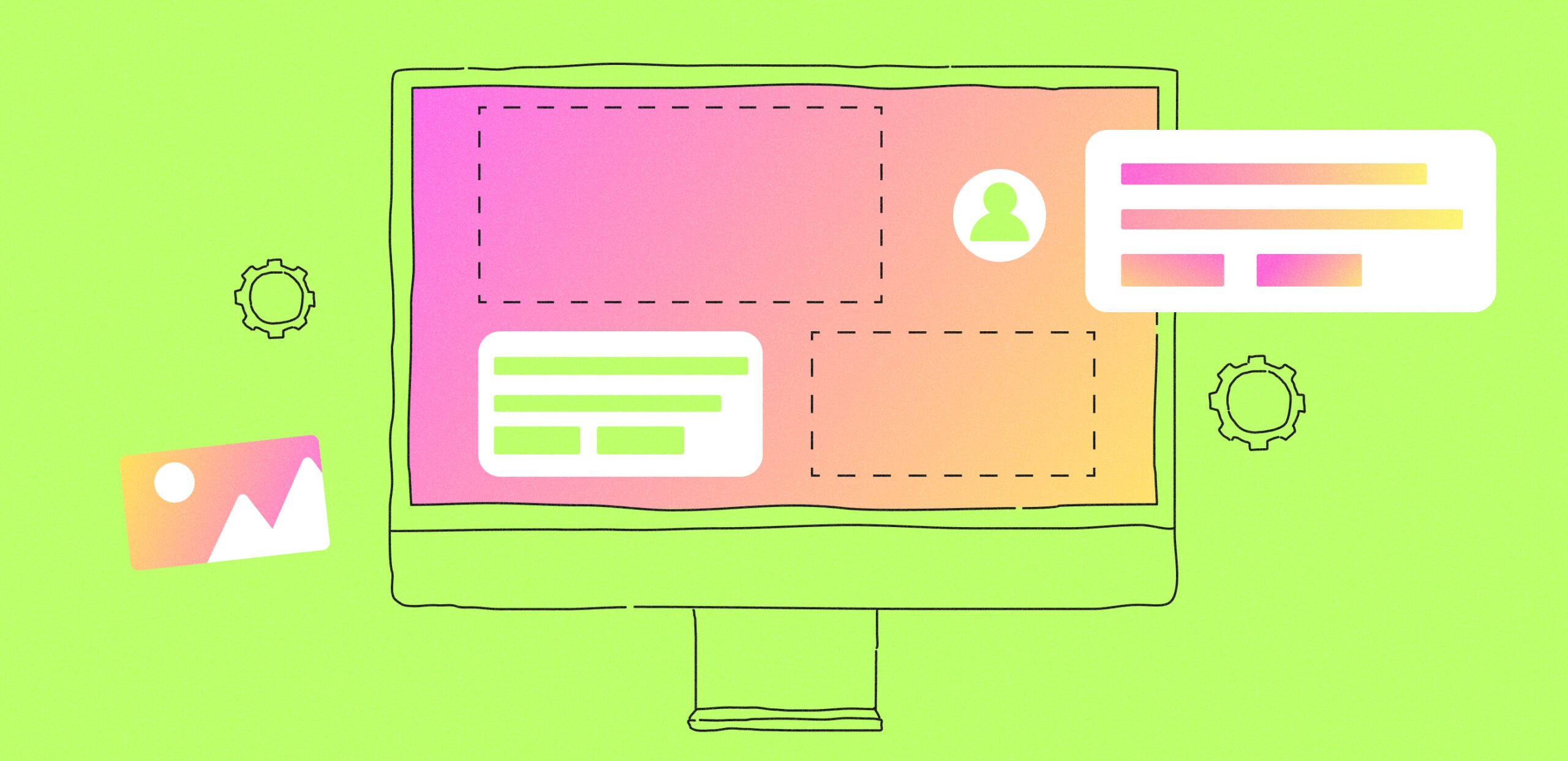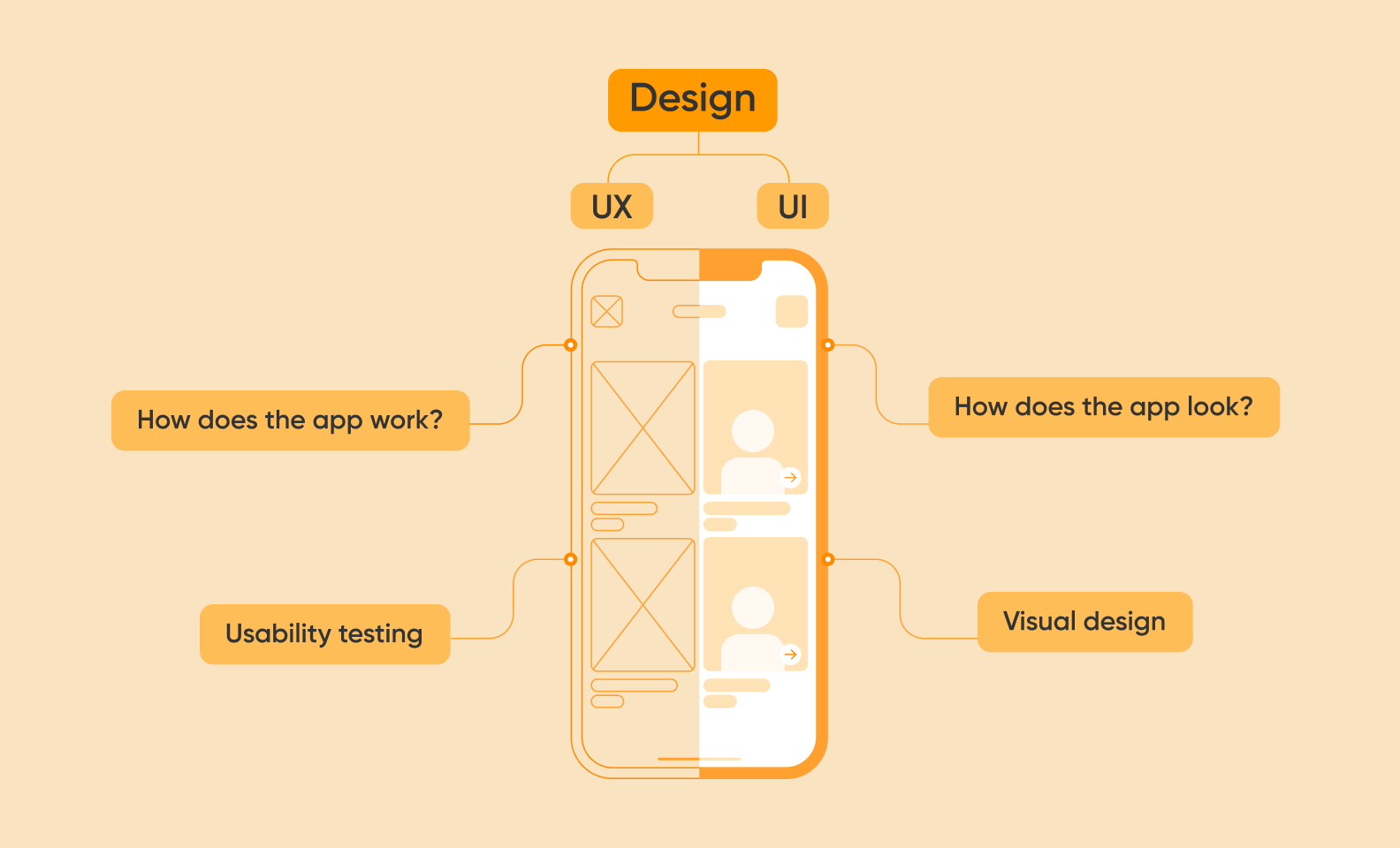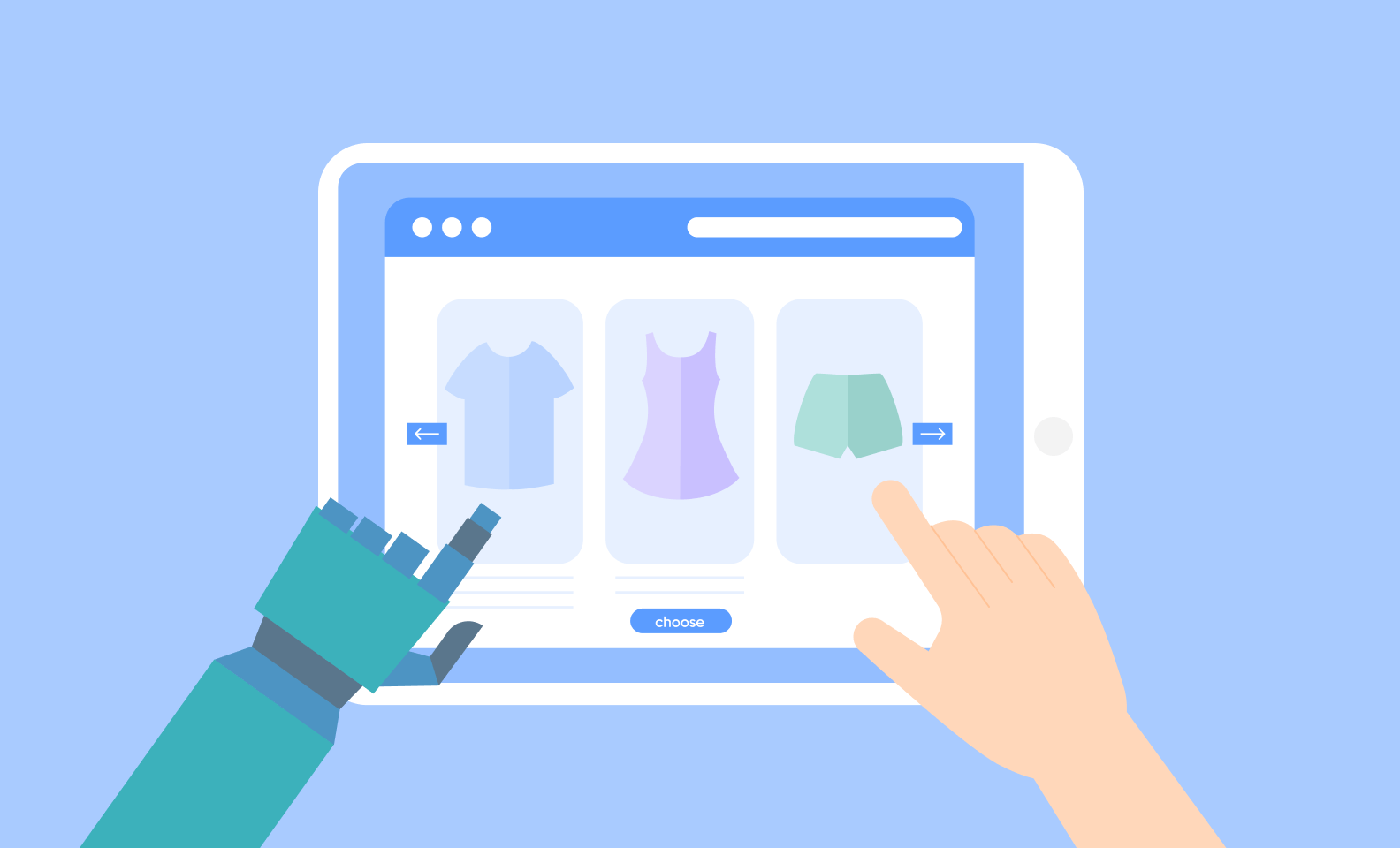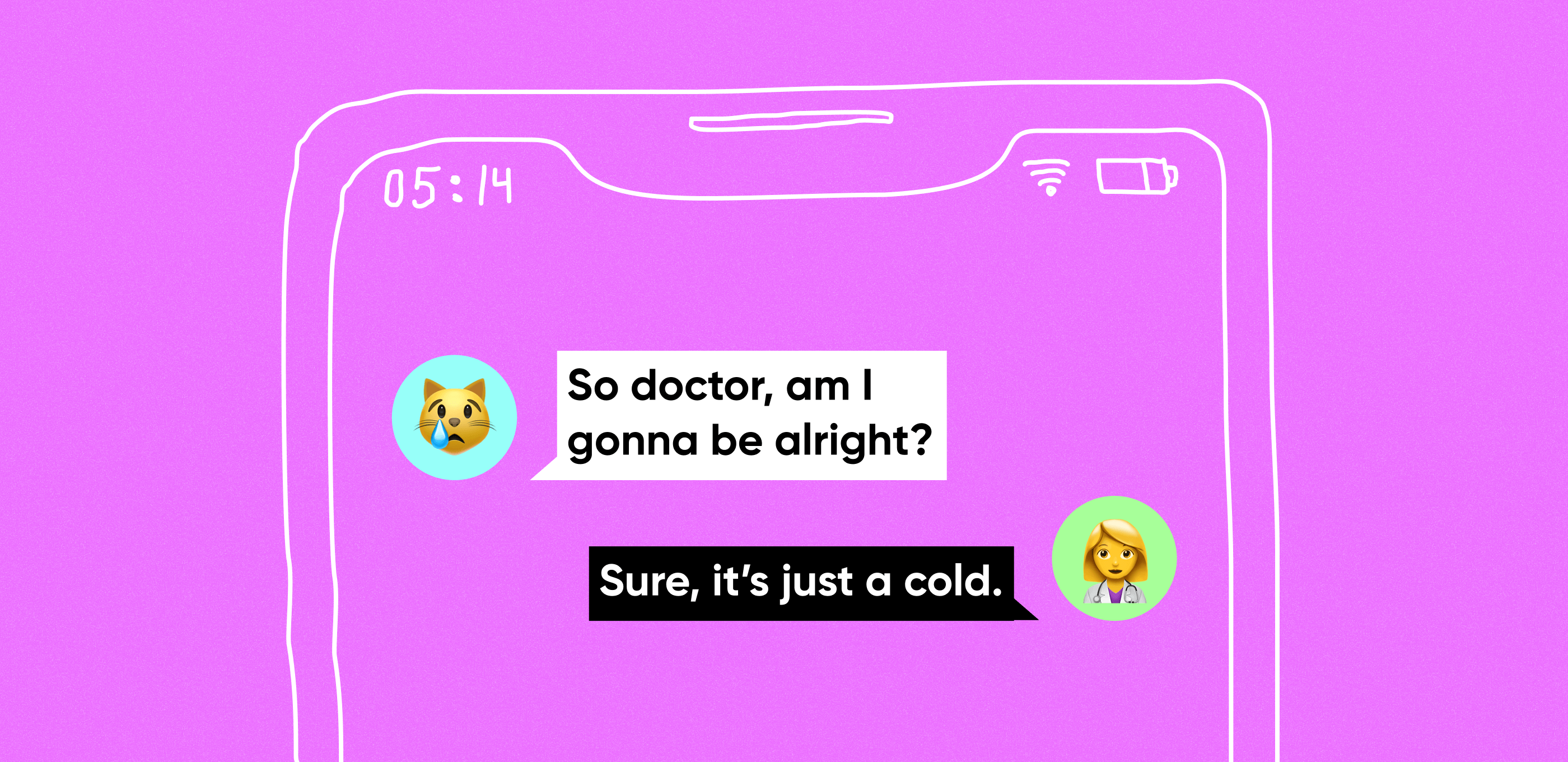Key takeaways
-
- Custom apps can have a unique design and features to meet your company’s needs.
- Custom apps can help manage interactions with clients, site maintenance, automate business processes, and much more.
- Apps simplify communication with your team and customers and help attract new clients. They can also quickly scale without compromising on security.
What are custom web applications?
The term “custom” refers to the product built or altered according to specifications. A custom app can be created according to the requirements and business goals of a client. Custom options add uniqueness and convenience, but as a result, require more investment. However, the cost of developing a specific app for your business is well worth it.
Custom web application development consists of utilizing advanced technologies to create a unique design and features that meet your needs. All in-app features, design, and UX derive from the needs and preferences of the customer.
There are custom mobile, desktop, and web apps. In this article, we’ll focus on the web products that are accessed online through web browsers. If you want to learn more about mobile app development, check out Purrweb’s mobile page.
In contrast to custom apps, there are off-the-shelf apps. These are ready-made standard solutions that are difficult to modify. They can be branded and integrated into business processes, but they are less flexible and may not have the necessary functionality.
The types of custom web applications
A custom web app can simplify your work and help build an audience faster. Below, we’ll run through the main types of apps businesses commonly use to complete important tasks.
Customer relationship management apps
CRM apps help organizations manage interactions with their customers. These applications are centralized databases used for storing customer data. There, you can find contact information, purchase history, and customer preferences.
CRM apps offer tools for company-client communication via different channels — emails, phone numbers, social media, and chats. They also implement features for tracking leads, spotting sales opportunities, conducting marketing campaigns, and making reports.
Content management systems
CMSs help maintain a company website, blog, or online store. They allow users to publish digital content like text, images, videos, and other files. Various enterprises use CMSs to update website content and conduct digital marketing campaigns.
With the help of a graphical user interface, promoters and marketers can create and edit content even without much need for technical knowledge. In addition, some CMSs include tools to manage site navigation and user accounts. Businesses benefit from such apps because of their useful content organization and categorization features.
Business process automation apps
Custom web apps for business process automation allow much more freedom than ready-made solutions. Such apps are designed to automate and streamline business tasks such as human resources management, accounting, taxes, etc.
Since business process automation software helps eliminate routine manual tasks, companies can significantly reduce costs and increase productivity. And to find a solution that’s perfect for your firm, go for customization rather than using lots of different pre-built programs.
E-commerce apps
Custom software solutions for e-commerce are on the rise. They include B2B and B2C apps used to interact with different stakeholders. Multiple marketplaces offer goods and services that you can purchase online. Since the pandemic, delivery services are also gaining popularity so to make shopping convenient, companies are developing their unique apps.
An online marketplace app typically offers a product list with descriptions, images, and prices. It has a search function and filters so that customers can quickly find what they need. One of the must-have features is a secure payment gateway to pay for purchases. Here is a video content marketplace that we built a while ago.
Paperless offices
A paperless office, as its name implies, is a workplace where employees don’t need paper documents. Thanks to global digitalization, paperless offices have become especially popular.
Software solutions for organizing such a workplace help reduce storage costs, improve coordination of the work processes, and tighten up security. You can deal with documents more safely and quickly, thanks to online document management and electronic signatures.
The benefits of custom apps
Custom apps enable better communication with your team and customers, allow you to reach a larger audience, and help attract new clients. But standardized template apps offer these benefits, so why make a unique custom product for your business? Let’s look at the advantages of custom apps over off-the-shelf solutions.
Uniqueness
Custom web application development helps create unique solutions that meet the specific needs and requirements of each business. Compared to off-the-shelf software, custom apps are developed from the ground up, providing companies with a solution optimized for their specific processes and customer needs.
Ease of customization
Custom apps can be built to spec. As they are easily customizable, enterprises can make any necessary changes and updates. With customization, the product can be adapted to the business needs. Eventually, companies can easily handle changing market conditions and aren’t dependent on third-party software vendors.
Scalability
Custom apps easily scale, meaning they can grow or scale down over time to meet changing business needs. Sometimes, the market demand for specific products and services fluctuates, so a company needs to be able to react and prevent the servers from getting overloaded. The app needs to be able to manage a high demand, to handle the sudden influx of clients.
Compatibility
Custom apps can seamlessly integrate with other systems and software, which makes them more compatible than off-the-shelf offerings. Thanks to simple integration, businesses can create a consistent workflow and avoid manual data entry or duplicated processes. Compatibility is achieved through the use of Application Programming Interfaces (APIs) that allow different systems to communicate with each other.
Safety
User data security is always important. Custom apps are, by definition, more secure than ready-made ones, as they are developed specifically for a particular business, they are more likely to meet the company’s security requirements. You can add a layer of protection by implementing data encryption or user authentication.
5 features to consider for custom web applications
When building a custom web app, you’ve got to think beyond basic functionality. We put together a short list of 5 nice-to-have features that’ll stand your product out among the competitors.
1. Search engine optimization
If you don’t want your web application to get lost on the twentieth page of the Google search, you should implement SEO optimization into your product from day one. Here’s why:
-
- There are just over 1.1 billion websites online. But only a small fraction of them are updated, maintained, and frequently visited.
- 93% of online user experiences start with a search engine.
- Over 50% of all web traffic comes from organic search.
At Purrweb, we recommend implementing the best SEO practices, like:
-
- Clean, maintainable code structure
- SEO-optimized content, keyword utilization
- Fast loading times — not longer than 2-second load times, even for complex apps
- Mobile responsiveness
2. Analytics & reporting
Robust and detailed analytics can help you track user behavior, identify bottlenecks, and make data-driven decisions. During the development process, the team will set up analytics services, such as Google Analytics, Mixpanel, or custom dashboards, depending on what insights you will need.
For example, for one of our cases, we developed custom dashboards to track KPIs, business metrics, and analytics.
3. Social integration
To enhance the user experience of your web application, add features like social login options, social media share buttons, or user-generated content integration. These features will help you with several aspects:
-
- Boost user engagement
- Simplify sign-ups
- Amplify your reach through shares on third-party platforms
4. Live chat
Users appreciate an opportunity to have direct communication when they experience challenges with a product or have questions. Now, you don’t even have to have a human working behind the live chat — there are plenty of AI-powered chatbots that offer 24/7 automated support.
For example, for an online therapy app, we developed a chatbot that supports users 24/7 and asks specific questions to narrow down customer requests:
5. Security
Every year, almost half of all small businesses fall victim to data breaches and cyber-attacks. So, if you think that your business is not big enough to become a target for cybercriminals, think again.
Here are a few security features that will make your web application more secure and protected:
- End-to-end encryption
- Two-factor authentication
- Regular security audits and updates
Custom web application development process: 5 steps
The perfect option for startups is to launch an MVP (minimum viable product). A minimal viable product is an app that includes only the key features you need to test your product on the market. It’s a fully functional app that can be then scaled if needed.
The application development process consists of several stages. Before we get to the cost, let’s break down what exactly a company needs to do to go from an idea to a fully-functioning product. Here are the steps you’ll go through if you choose to develop an app with Purrweb:
1. Define goals and scope
First, set clear goals and objectives for your custom web app development journey, determine technical requirements, and create a roadmap that will guide you along the way. Make sure that those goals align with business objectives and user needs. During the later development stages, you can come back to that roadmap and make decisions that are driven by your strategy and ultimately benefit the startup.
2. Market analysis & planning
At this stage, it is important to decide on the idea and the general concept of the project, as well as understand who your target audience is. You can analyze your competitors, their audience, and current trends in your industry. Sometimes, our clients carry out market analysis by themselves but our team of specialists can also help you with that. When planning, choose the main features of the app that you want to include in the first version.
3. Design
The next step is to turn the idea of a web app into a design. We start by evaluating the references that the customer likes or dislikes and find the perfect fit for the company. Then, we show the functions of the product on the mind map, create wireframes, and develop UI/UX. As a result, the client gets live clickable prototypes of a web app.
4. Development & testing
It’s time to transfer our design into code. We use React.js and Node.js for web app development, as these JavaScript libraries are ideal for web apps. The React open-source library is used for the front end, while Node.js is a tool for back-end development. Both of them allow applications to show high performance and flexibility.
Set some time aside to test your custom web application. A test run allows you to check all aspects of the app’s work and avoid bugs going forward. It’s better to test your app in parallel with development to fix errors as early as possible.
5. Release and maintenance
Launching a web application is not the final step. After our team delivers the finished product to the customer, there is a period of customization and post-release maintenance. Gather feedback from your users to get an idea about which features to add, remove, or change.
Tech stack needed to develop a custom web application
Tech stack always depends on the specific business goals and technical requirements that you set at the very start. Most tech stacks are a combination of back-end and front-end technologies, such as programming languages, frameworks, libraries, as well as cloud hosting services.
Back-end technologies
The back-end, or server-side, is the backbone of a web application since it keeps everything behind the scenes up and running.
Programming languages: JavaScript, C#, Python
Frameworks: Node.js
Databases: PostgreSQL, MySQL, MongoDB, AWS RDS, DynamoDB
Front-end technologies
The front-end, or user-side, is responsible for the front-end of a web application and for the communication between a user and a solution.
Programming languages: HTML, CSS, JavaScript, TypeScript
Frameworks: React.js, Vue.js
Cloud hosting
They host web projects in a cloud and make them accessible to users on the internet. Cloud hosting services combine virtual servers with physical infrastructure for greater flexibility, reliability, and security.
Examples: AWS, DigitalOcean, Heroku
Where to find developers for custom web applications
Need a skilled team for your web app project? Here are 4 go-to spaces to kickstart your search.
Clutch
Clutch.co is the perfect place to find the best development teams on the market. With 200,000+ agency profiles and real client reviews, you’ll get the lowdown on potential partners. Filter by location, budget, and tech expertise to nail down your perfect match.
Dribbble
Dribbble is a hub for UI/UX designers, where you can get insights into the skills of designer teams. Browse through 1 million+ creative portfolios to find devs with a keen eye for design.
Fiverr
Need a quick fix or a small-scale project? Fiverr is your spot. With 3 million+ digital services on offer, you’ll find freelance devs for every budget and timeline. Just remember: you get what you pay for.
Word of mouth
Lastly, don’t underestimate the power of networking. Ask around — colleagues, friends, or that person you met at a startup meetup. Through personal recommendations, you can get honest, unfiltered feedback on developers’ work ethic and end results.
3 things to consider after the development of a custom web application
You’ve launched your web application. Well done, congrats! But the journey’s not over — any successful web app is an ongoing project. To keep users satisfied and your business growing, proper post-launch support is a must.
Here are 3 crucial things to keep in mind:
Maintenance
Regular updates keep your app running smoothly. Plan for bug fixes, performance tweaks, and feature releases. At Purrweb, we offer 2 different types of post-launch support services: ongoing support and new feature development.
Scalability plans
As your user base grows, you need to make sure the solution can handle the load. With custom web applications, you can get ahead of the curve and set a foundation for flexible scaling from the start.
Security requirements
Cyber threats evolve daily, therefore, any web application needs to implement regular security audits and updates. Our team uses industry-standard encryption and follows the best quality assurance protocols for the effective security of the solutions we release.
Why choose Purrweb for custom web app development
At Purrweb, we provide full-cycle web development services and create unique custom solutions with the needs and goals of a client in mind. With 10+ years of experience and 180+ executed projects in our portfolio, we mastered responsive and multipurpose web and mobile apps with user-centered design and high-performance infrastructure.
Here are 3 web app projects we’ve worked on:
Biogeek
Biogeek is a web app that helps users keep all their medical lab tests in one place and monitor their health. We created an intuitive UI/UX and developed web and mobile applications.
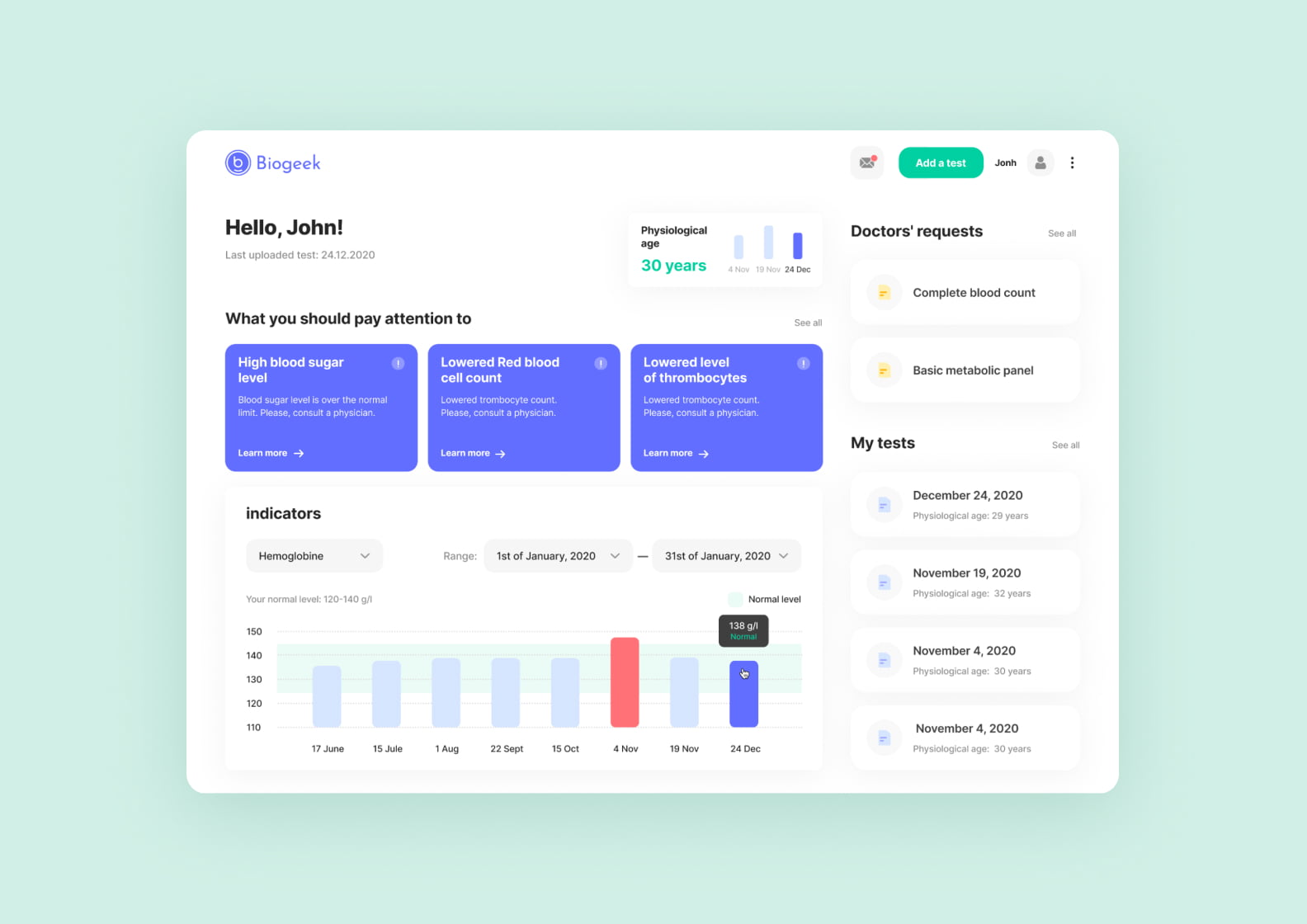
For this app, we used green and purple as the primary colors to give the web app a fresh look and stand out from the competitors
CUBBIQ
CUBBIQ is a C2C web app for storage rentals in Singapore. It helps users find a ‘landlord’ with vacant storage rooms or garages and get that space to store their belongings. For this client, we first prioritized and selected key features, saving over 80 hours of development time. Then, we created an MVP and tested the solution to make sure no bugs sneaked into the final version.
Carbon Accounting
Carbon Accounting is a digital eco-consultant for companies that care about the environment and want to attract investments with greener production practices. In this web app, companies can track their emission levels, analyze the data, and plan the budget for offsetting the negative impact. We developed a custom web application and integrated international GHG standards (Greenhouse Gas Protocol) for analytics.
How much does custom web application development cost
Application development pricing varies depending on:
-
- the complexity of the app,
- the technologies used,
- the features that the client wants to be in the app.
Each company has its own methodology, level of expertise, and rating, so it’s hard to name a single price for app development. But being a development company ourselves, we can tell you exactly how much it will cost to build an app with Purrweb and what stages it includes. Custom software development with minimal necessary features (an MVP) will look as follows:
| Stage | Estimation in hours | Estimation in weeks | Approximate costs |
| Project review | 8 hours | 1 day | Free at Purrweb 😌 |
| UI/UX design | 110 hours | 4 weeks | $5,500 |
| Development | 800 hours | 15 weeks | $45,000 |
| Quality assurance | 520 hours | In parallel with the development | $10,400 |
| Project management | during the whole project | during the whole project | $10,500 |
Overall, custom web application development can take up to 15-20 weeks and cost you approximately $65,000-$ 75,000.
Summing up
Custom apps offer companies many benefits, including being more: unique, scalable, compatible, and secure. With customization, you’ll get a tailored design and features that meet your specific needs.
By working with experienced web app developers, companies can create highly specialized and more efficient apps. For example, it’s better to build a custom health app than to choose a ready-made template. Explore our portfolio and fill in the form to get a personalized quote. Launch your app with Purrweb!

